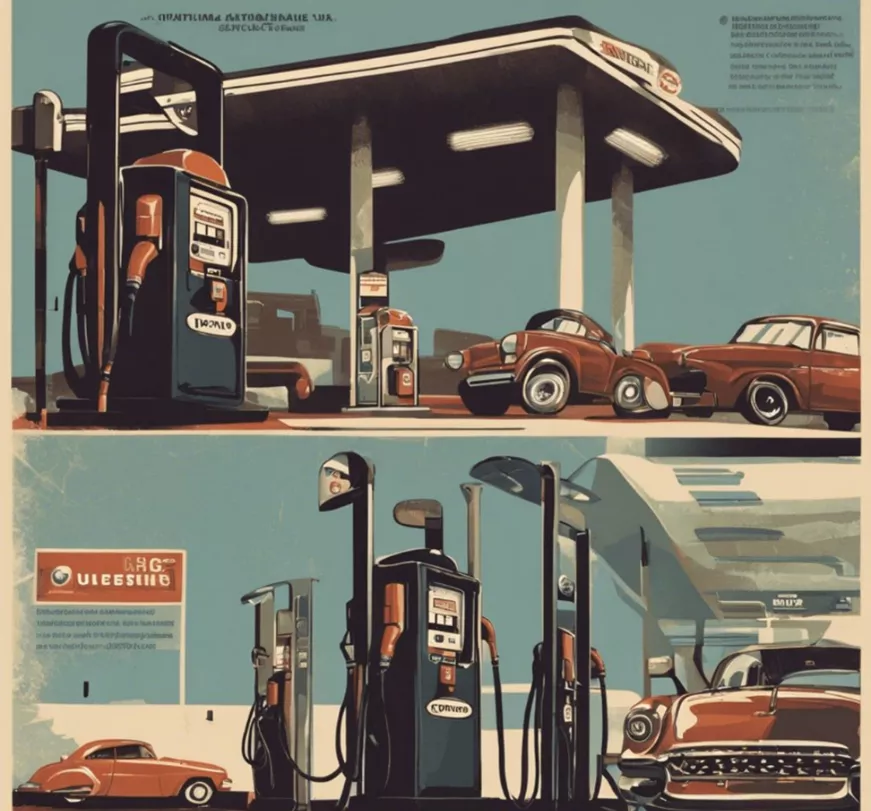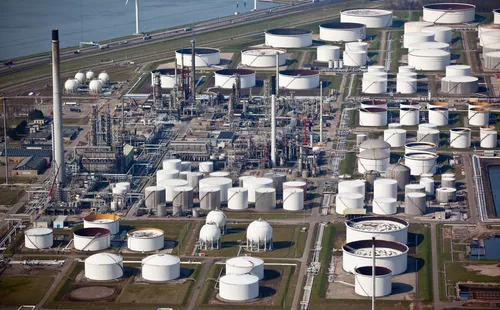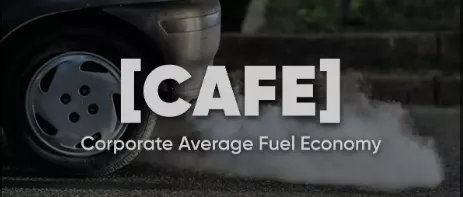Table of Contents
- The history of gasoline in the United States
- Current overview of gasoline production
- Economic and global impact of U.S. gasoline production.
- Geopolitical and energy security challenges
- Recent trends
- Consumer perspective and changes in consumption patterns
- The future of gasoline production
- Conclusions
- References
Exploring the history of gasoline, a fundamental pillar in the industrial and economic development of the United States. With the rise of the automobile at the beginning of the 20th century, the demand for gasoline skyrocketed, consolidating itself as a significant resource for transportation and industry. The evolution of gasoline reflects not only America’s economic and technological history, but also a fascinating narrative from the early days of the Standard Oil Company to today’s complex network of refineries and distribution.
This article also focuses on the significant economic impact of gasoline production on the U.S. economy, an aspect that has been fundamental since the industrial revolution. From price fluctuation to environmental impacts, this analysis aims to provide a comprehensive view of how gasoline production remains an important component in the country’s energy matrix and how it is adapting to a rapidly changing world.
The history of gasoline in the United States
The history of gasoline in the United States dates back to the discovery of oil in Pennsylvania in 1859, sparking an oil rush that led to the rise of oil giants such as John D. Rockefeller’s Standard Oil Company. However, this development also brought with it environmental concerns, generating debates on the need to move towards more sustainable energy sources today.
As automobiles became popular in the early 20th century, the demand for fuel increased exponentially. Gasoline, a by-product initially discarded in oil production, emerged as the fuel of choice for internal combustion engines. This led to increased oil exploration and production, as well as the construction of refineries and pipelines throughout the country.
With the growth of the vehicle fleet, service stations emerged to meet the increasing demand for gasoline. These stations became social gathering places and played a crucial role in the expansion of the U.S. highway system.

Current overview of gasoline production
Gasoline production in the United States has undergone a significant transformation in recent decades. According to the U.S. Energy Information Administration (EIA), the country produced approximately 18.5 million barrels per day of refined petroleum products in 2023, gasoline being one of the main ones. The Gulf of Mexico, Texas and Louisiana regions stand out as key refining areas, driven by their extensive crude oil reserves and proximity to critical infrastructure.

Technological innovation in refineries is a key point in this process. U.S. refineries have adopted advanced methods such as catalytic cracking and hydrodesulfurization to improve efficiency and fuel quality. Leading companies such as ExxonMobil, Chevron and Valero stand out not only in terms of production capacity, but also in driving technological innovation in the industry.
Economic and global impact of U.S. gasoline production.
Analyzing the economic economic impact of gasoline production in the United States, it is clear that it is not only a pillar of its domestic economy, but also plays a crucial role in the global economy. This industry represents a significant part of the U.S. Gross Domestic Product (GDP), generating thousands of direct and indirect jobs in sectors such as refining, distribution, and retail sales. In addition, gasoline production influences secondary sectors, such as transportation and manufacturing, which depend on a reliable and affordable energy supply.
Internationally, the United States is one of the largest producers of oil and refined products, including gasoline. This places the country in a strategic position in world energy markets. The decisions made in Washington regarding gasoline production may have repercussions on oil prices at a global level, affecting the economy of both oil exporting and importing countries.
The export of gasoline and other refined petroleum products is also an important facet of U.S. trade policy. These exports represent a significant source of income and a key component of the country’s trade balance. The ability of the United States to export gasoline and refined products helps maintain its influence in strategic regions and strengthens its relations with allied countries, especially in times of crisis or instability in oil-producing regions.
In addition, the U.S. gasoline industry plays a vital role in national energy security. By maintaining robust and diversified production, the country can reduce its dependence on imports of crude oil and refined products, which in turn contributes to domestic price stability and protects the national economy from external fluctuations and shocks.
In short, gasoline production in the United States has a profound impact not only on its domestic economy, but also on geopolitics and world energy markets. As the country adapts to new trends and challenges in energy production, it will continue to be a key player in shaping the global energy landscape.
Geopolitical and energy security challenges
Gasoline production in the United States is intrinsically linked to a complex web of geopolitical interests and energy security challenges. This interconnectedness manifests itself in several key dimensions.
First, U.S. dependence on crude oil imports, necessary for gasoline production, places it in a delicate position with respect to fluctuations in the politics and stability of oil-producing regions. Although domestic oil production has increased significantly, the U.S. still needs to import crude oil to meet its total consumption needs. This means that conflicts, political tensions or crises in oil-producing countries, such as OPEC members, can have a direct impact on U.S. energy and economic security.
Secondly, the production and export of gasoline has become a foreign policy tool for the U.S. As one of the largest producers of oil and refined products, the country can influence global markets and use its exports as a means to strengthen geopolitical alliances or exert economic pressure. This capability has been demonstrated on several occasions, where the United States has used its energy resources as an instrument of diplomacy and negotiation.
In addition, gasoline production also poses domestic challenges related to energy security. Critical infrastructure, such as refineries and pipelines, are susceptible to threats such as cyber attacks, natural disasters and acts of terrorism. The need to protect these infrastructures is a crucial aspect of national security, and requires constant investments in technology, surveillance and emergency response strategies.
Growing concern about climate change and the transition to cleaner energy is redefining priorities in U.S. energy policy. gasoline production, as part of the fossil fuel sector, faces pressures to adapt to a more sustainable energy future. This involves a delicate balance between maintaining energy and economic security and moving towards carbon emission reduction targets.
U.S. gasoline production is at the center of a web of geopolitical and energy security challenges. How the U.S. navigates these challenges will not only determine the future of its energy industry, but will also influence its position on the world stage.
Recent trends
Gasoline production practices in the U.S. have evolved in response to a variety of factors. Energy efficiency and environmental regulations, for example, have driven significant changes. Regulations such as the Clean Air Act have encouraged the production of gasoline with lower sulfur content, thereby reducing harmful emissions.
Technology has also played a crucial role. The digitization and automation in the oil industry have increased have increased operational efficiency in refineries. In addition, the integration of carbon capture and renewable energy technologies is beginning to change the landscape of fossil fuel production.
Gasoline demand has shown fluctuations, influenced by factors such as oil prices, economic trends and changes in mobility patterns. The rise of electric vehicles, for example, represents a potential shift in future gasoline demand. These dynamics force the industry to constantly adapt, seeking a balance between profitability, sustainability and regulatory compliance.
Consumer perspective and changes in consumption patterns
Consumer behavior in the United States plays a vital role in the evolution of the gasoline industry. As environmental concerns grow and technologies advance, fuel consumption patterns are undergoing significant changes.
One noticeable trend is the growing interest in more fuel-efficient vehicles and, in particular, electric vehicles (EVs). EV sales have been on the rise, driven by increased environmental awareness, government incentives and advances in battery technology. This transition to electric vehicles suggests a future decrease in dependence on gasoline as the main source of energy for transportation. However, the speed of this transition will depend on several factors, including the development of charging infrastructure, the cost of EVs, and supportive government policies.
Another trend is the increasing sensitivity of consumers to fuel prices. Fluctuations in gasoline prices can significantly affect consumption patterns and vehicle purchasing decisions. In periods of high oil prices, there is an increase in demand for more fuel-efficient vehicles. This behavior reflects an economic awareness that, in turn, influences gasoline production and marketing.
In addition, consumers are increasingly informed and concerned about the environmental impacts of their choices. This translates into a growing demand for more sustainable alternatives, such as biofuels or gasoline with additives that reduce pollutant emissions. Such demand drives the industry to adapt its production methods and offer products that are in line with consumers’ environmental expectations.
In summary, consumer perspectives and changing consumption patterns are playing a crucial role in shaping the future of U.S. gasoline production. The industry must be attentive to these trends in order to adapt and maintain its relevance in a rapidly changing energy market.
The future of gasoline production
Looking ahead, gasoline production in the United States faces an era of significant transformation. Projections indicate a gradual shift in demand, influenced by the adoption of electric vehicles and policies focused on reducing the use of fossil fuels. According to the Energy Information Administration (EIA), U.S. gasoline demand is expected to begin to decline over the next decade as fuel efficiency policies and clean energy alternatives gain ground.
In terms of innovations, the oil industry is exploring ways to make gasoline production more sustainable and efficient. One such innovation is the integration of biofuels, such as ethanol, which can be blended with gasoline to reduce carbon emissions. In addition, the development of technologies such as carbon capture and storage (CCS) could enable cleaner production of fossil fuels, although their feasibility on a large scale remains a matter of debate.
The transition to renewable energy is having a significant influence on the oil and gas industry. With the increasing focus on reducing greenhouse gas emissions, the pressure on industry to adapt is high. This could lead to greater investment in alternative energy sources, such as solar or wind, and diversification in the portfolios of the major oil companies. Some of these companies are already investing in renewable energy projects, preparing for a future where gasoline could play a less dominant role.
Despite these changes, gasoline will remain an important component of the energy mix for the foreseeable future, although its role and mode of production may evolve. The industry is at a turning point, where adaptation and innovation will be crucial for its long-term survival and sustainability.
Policy and regulatory initiatives
Policies and regulations are fundamental components that shape U.S. gasoline production and consumption. These initiatives not only have a direct impact on the oil industry, but also play a crucial role in moving towards a more sustainable energy future.
First, environmental regulations have been a significant driver of change in the industry. Regulations such as the Environmental Protection Agency (EPA) emission standards have forced refineries to produce cleaner gasoline, with lower sulfur content and additives that reduce harmful emissions. These regulations have led to investments in more advanced and cleaner refining technologies.
On the other hand, federal and state energy policies are encouraging the transition to cleaner and renewable energy sources. Incentives for the development of biofuels, tax credits for electric vehicles and subsidies for alternative energies such as solar and wind are redefining the energy landscape. These policies not only seek to mitigate the environmental impact of fossil fuels, but also to promote energy diversification and reduce dependence on gasoline.
In addition, fuel efficiency policies for vehicles, such as CAFE (Corporate Average Fuel Economy) regulations, have had a considerable impact on gasoline demand. By requiring automakers to achieve a specific average fuel efficiency in their fleets, these policies have led to the development of more efficient vehicles and, therefore, less demand for gasoline.

Internationally, U.S. commitments to global climate agreements, such as the Paris Agreement, also influence domestic policies related to gasoline production and consumption. These agreements involve continued efforts to reduce greenhouse gas emissions, which will likely result in increased regulation and restrictions on fossil fuel production.
Conclusions
Looking ahead, the U.S. gasoline industry faces inevitable change. The growing demand for cleaner and more sustainable alternatives, the rise of electric vehicles, and policies aimed at reducing dependence on fossil fuels point to a gradual decline in gasoline demand.
The changing needs of consumers and the environment will define the role of gasoline in the new energy era. In this context, policies and regulations will play a crucial role in guiding the transition to a more sustainable and resilient energy future.
In summary, this analysis not only highlights the historical and technological importance of gasoline, but also its profound economic impact on the world scene.
References
Own source

